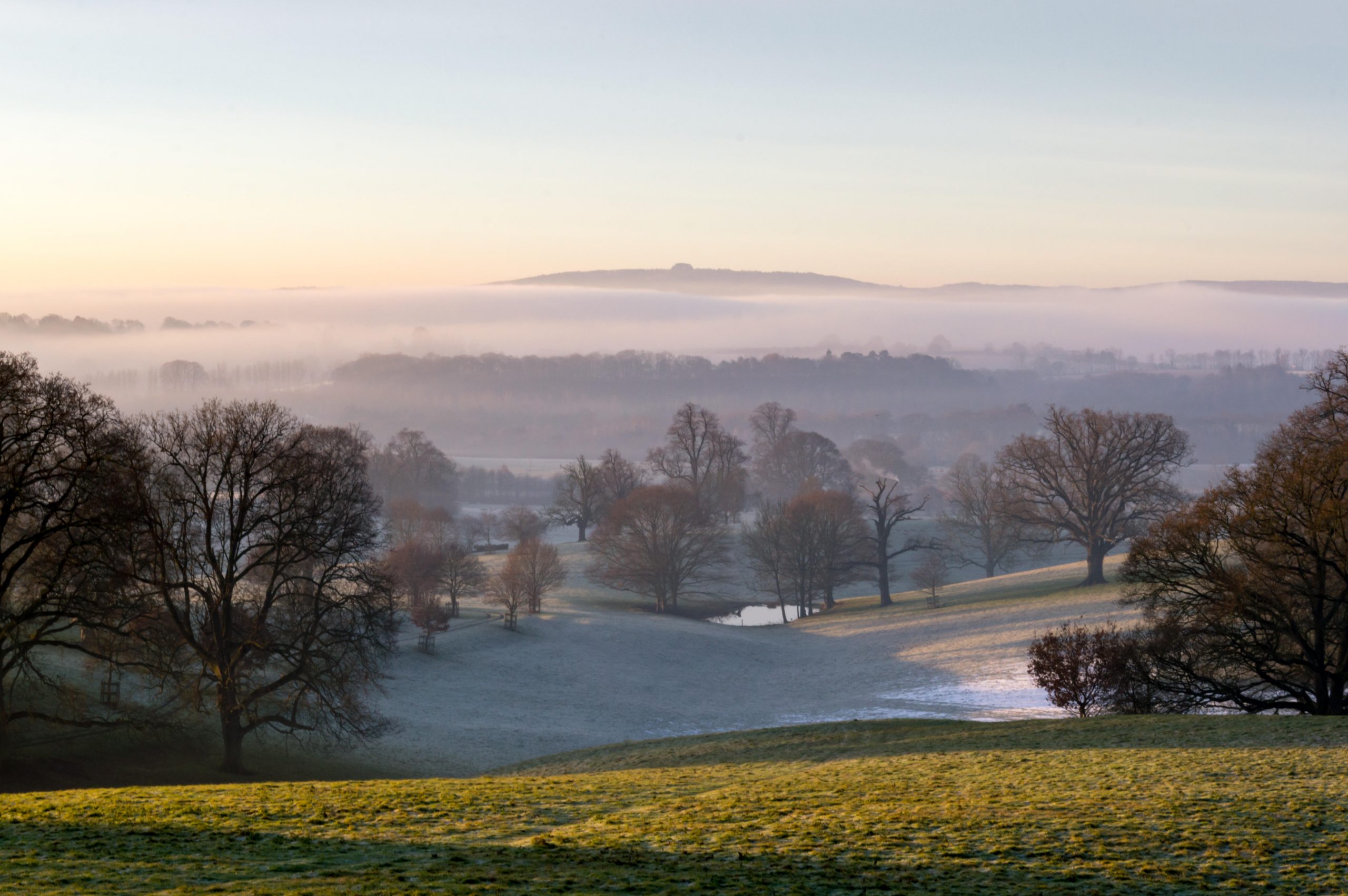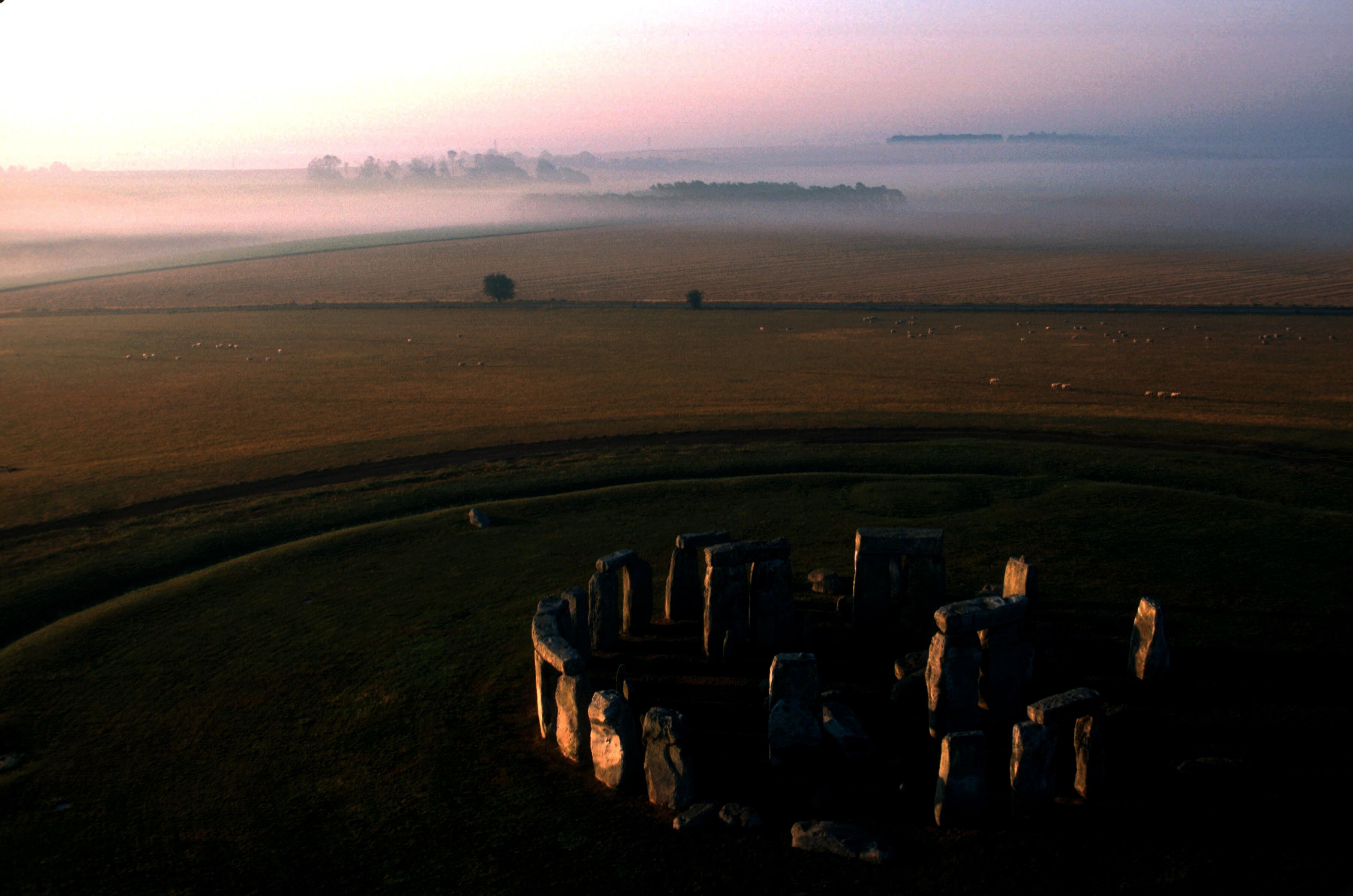May Hill: A walk across the summit of Gloucestershire
May Hill, with its spectacular views lit by winter sun, has a promise of the spring to come, as in Edward Thomas’s account of an epic walk. Fiona Reynolds follows in his footsteps.


After getting drenched in Suffolk over Christmas, I’m determined to pick a better day for my next walk — and what a day I choose! After weeks of relentless rain, the temperature has dropped, the ground is frosty and the sun is out. The air is bitterly cold, but the sun’s rays hold a hint of warmth, as if to say we are on the right side of Christmas and spring will surely come.
In this cheerful mood, we set out for May Hill, the highest point in Gloucestershire. Its distinctive rounded profile, topped by an aesthetically perfect stand of pines, is visible for miles in all directions. From the dispersed village of May Hill itself, it’s only a short, refreshing walk to the hill’s approach, then a gentle gradient to the top. We’re not alone: several families are, like us, revelling in the change in the weather.
On such a beautiful day, the views are nothing short of spectacular. To the south-west is the vast expanse of the Forest of Dean, one of our most ancient wooded landscapes; further west are the Black Mountains; and beyond — just visible — is the ridge of the Brecon Beacons. To the north are the Malvern Hills and to the east the bulk of the Cotswolds. The January light is sharp and the colours — browns, golds, greens and greys — exquisite.
Drinking in the view, we descend from the summit, bearing north then east into Newent Woods. The late-afternoon sun pierces the trees, casting huge shadows and highlighting the tender green shoots of early growth, stimulated by the warmth we had over Christmas. In the wood, we follow a network of paths winding gently back towards May Hill, emerging as the sun nears the horizon and the coming night frost chills the air.

Yes, spring will surely come, as Edward Thomas wrote in In pursuit of Spring. It’s the story of his journey from London westwards to the Quantock Hills in Somerset via Guildford, Salisbury Plain and Wessex. He began the journey inspired by sudden glorious sunshine on ‘one of those great and notable days after the turn of the year’. It’s a wonderful record of his encounters, on foot and bicycle, of the people, places and character of the land and villages he passed through. It’s a timeless classic and I vow that one day I will walk the route myself.
Today, there’s another Thomas connection. May Hill has always attracted writers, poets and artists and, in the early 20th century, it was a haven for the Dymock poets. Thomas was a regular visitor and he loved walking with his friends, especially Robert Frost. In 1914, the year after his epic walk, Frost was encouraging him to turn to poetry:
The sun used to shine while we two walked Slowly together, paused and started Again, and sometimes mused, sometimes talked As either pleased, and cheerfully parted Each night. We never disagreed Which gate to rest on. (The Sun Used to Shine).
In This England, Thomas wrote of May Hill specifically: ‘Again and again we saw… the complete broad dome of a hill six miles distant, a beautiful hill itself, but especially seen thus, always unexpectedly, through gaps in this narrow country, as through a window’. He composed his famous poem Words on its very slopes, ending:
Exquisite houses, the beauty of Nature, and how to get the most from your life, straight to your inbox.
Let me sometimes dance With you, Or climb, Or stand perchance In ecstasy, Fixed and free In a rhyme, As poets do.
Three years later, Thomas was dead, killed in the Battle of Arras soon after his arrival in France. He’d agonised about signing up, but eventually did, saying: ‘It seems foolish to have loved England up to now without knowing it could perhaps be ravaged and I could and perhaps would do nothing to prevent it.’ His sensitive, insightful writing was lost, but his legacy lives on in the places and Nature he loved.
Fiona Reynolds is chair of the Royal Agricultural University governing council and author of ‘The Fight for Beauty’

Rabbits: Our most underrated creature? The underground engineering and clever tricks of Britain's third-favourite pet
Pie filling, pest or pet of underrated beauty, the rabbit is a mute and gregarious commoner that will nonetheless scream,

Muswell Hill: The London spot whose views are 'unrivalled for beauty’, with 'a snapshot of the whole of London in front of you'
From Scottish kings to political protest, there’s more to Muswell Hill than its height, says Carla Passino.

The South Devon AONB: Rolling hills, endless beaches and ancient landscapes that Man has walked for millennia
Our series on Britain's Areas of Outstanding Natural Beauty continues with Rosie Paterson taking a look at the highlights of

Jason Goodwin: 'What gets lost will be forever lost, whereas pylons, cars and trains may be rendered obsolete'
Jason Goodwin muses on economics, Stonehenge and social media.
Fiona Reynolds is chair of the Food, Farming and Countryside Commission, the former director-general of the National Trust, former Master of Emmanuel College, Cambridge, and the author of The Fight for Beauty. Follow her on Twitter @fionacreynolds.
